Documenting the momentous power of the Black Lives Matter movement in the wake of the death of George Floyd at the hands on the Minneapolis police officer, Derek Chauvin, Marie Le Blé gives us a window into the protests from a photojournalist and delves into her personal experiences, including the individuals she met and that shaped her experience.

An Interview with Marie Le Blé, a photojournalist documenting the Black Lives Matter movement throughout 2020 and 2021.
Featured and written for the IMAGO Zine #2 | ICONS. Get your copy and subscribe to our upcoming issues.
Can you talk us briefly through the first time you heard about the Black Lives Matter Movement? Do you remember where you were, what you were doing and how soon after you went to the demonstrations to photograph?
I first heard of the Black Lives Matter movement in July 2014 when Eric Garner, an African-American man was killed after a NYPD police officer put him in a prohibited chokehold in the NYC borough of Staten Island. I just arrived from Europe to settle in the United States and I was struck by the violence of this tragedy as much as by the reason for the arrest of this 44-year-old father that came to a simple suspicion of selling cigarettes. How this man, a former horticulturalist in Central Park could have been suffocated to death in an apparently trivial police intervention. He himself had repeated these words eleven times, which have now been heard all over the world: “I can’t breath.” The impact caused by the death of Eric Garner across the country a year and a half after the shooting of Trayvon Martin, this unarmed 17-year-old black teenager killed by a security guard in Florida, suddenly made me realize live racial cleavage and the repetitive nature of police violence from which the United States is struggling to shake off. Eric Garner’s mother, speaking almost the same words as other New York mothers who lost a son, left an impression on me during a report after the death of George Floyd.
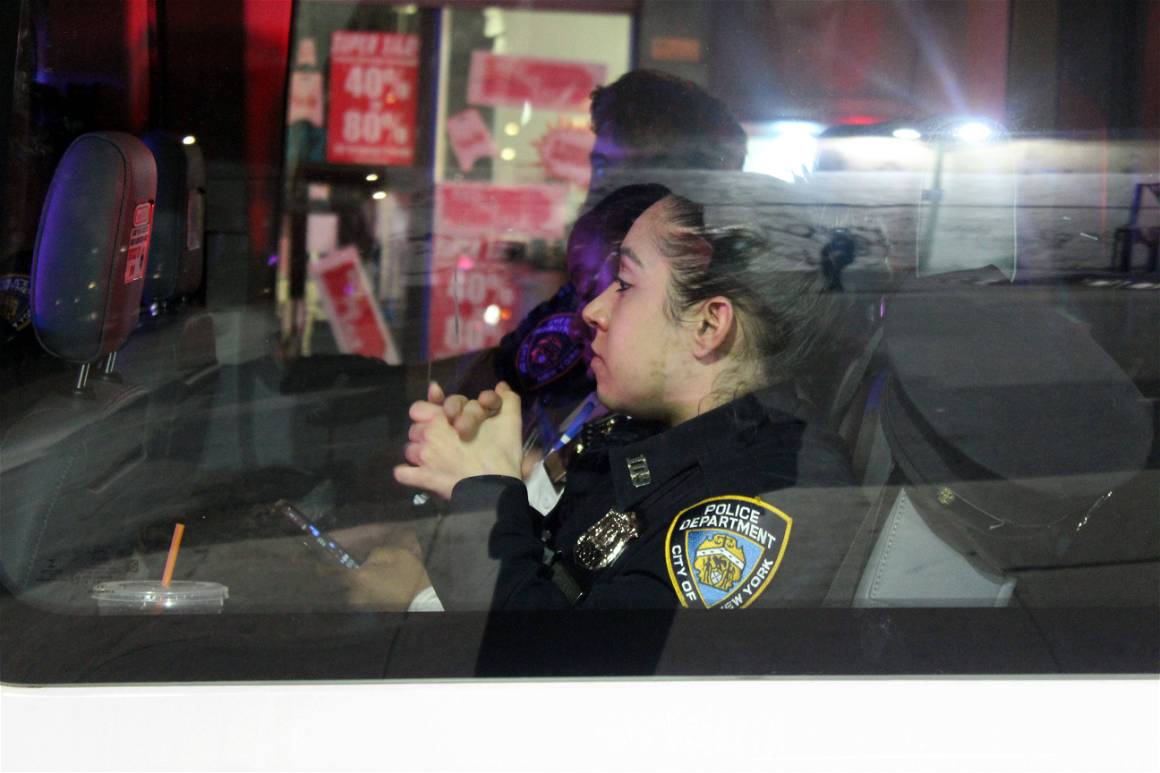
What is your take on the Black Lives Matter movement? What does it mean to you?
I wouldn’t really compare BLM to Me Too as you can hear it sometimes. For me, BLM was really born from the death of George Floyd, filmed live for awful and endless minutes on May 25, 2020. A tidal wave then swept over the United States and the rest of the world. Millions of people have thus decided to break down racial barriers and bring police brutality to an end. I was amazed at the first demonstrations to see so many white protesters in New York. Participants told me that the constant increase in interracial marriages could be the cause. You can be a blonde mother with blue eyes and fear for the life of your colored child who you tie up in the back of your car every morning. This historic mobilization was intended to unite whatever the skin color in the face of a systematization of brutality. The goal of those millions of people who shouted their anger and annoyance in the streets for months was to break the mold once and for all. All wanted to say no to the same words, to the same speeches, to the same tears watched for dozens of years, with the only difference being the names of the victims. George Floyd’s death served as a catalyst. It was the last straw that broke the camel’s back.
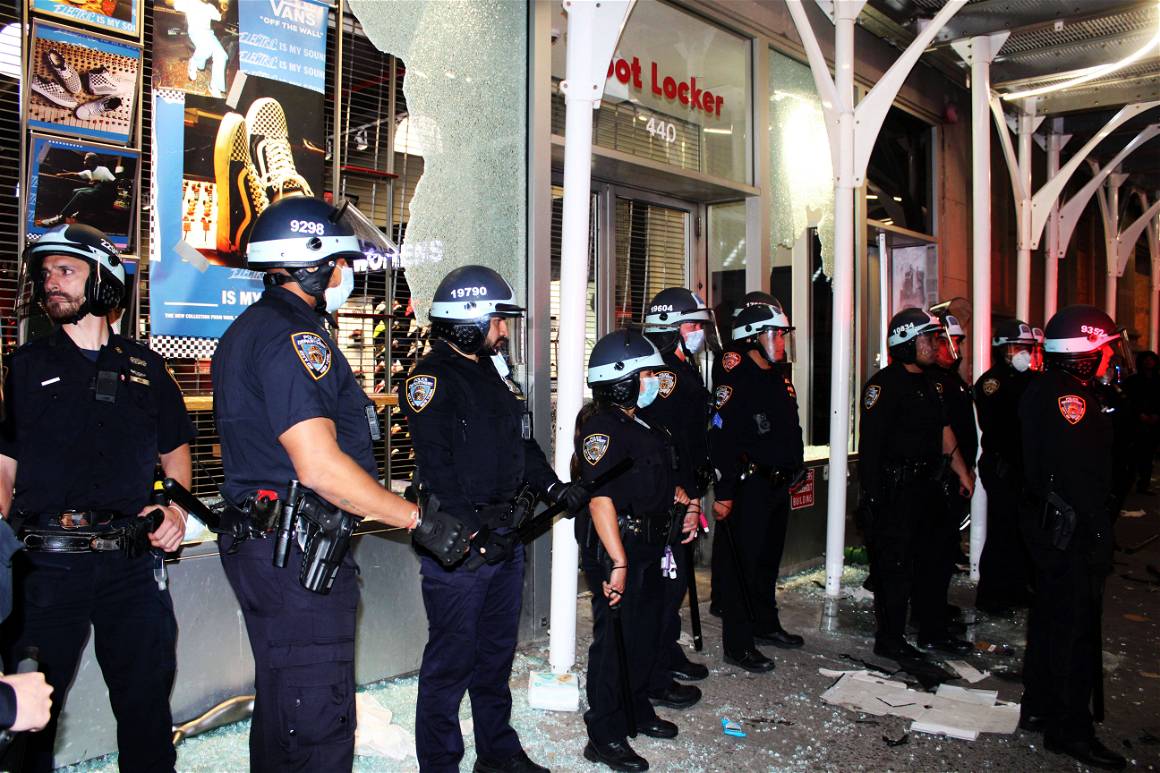
What was your first experience at the BLM protests? What did you hear, see, experience?
I had my first real experience on May 29, 2020, four days after the death of George Floyd. I remember arriving downtown Manhattan in the scorching heat. New York was just recovering from the deadly wave of Covid-19 that made it the epicenter of the country. The gatherings therefore represented a high risk regarding the pandemic but the fear of the virus was overwhelmed by the shock of this video which had gone viral. I see thousands of protesters huddled together, sweating, masks down, lifting hastily prepared cardboard signs with the initials BLM and George Floyd in court. Hygiaphones started calling out the names of Georges Floyd, Eric Garner, and Breonna Taylor in front of hundreds of police lined up and stoic in front of the crowd of demonstrators. I took dozens of photos that day in the midst of people moved, nauseated or silent but all determined by what had just happened. Some wore a mask with the name of George Floyd written in the palm of their hands. New York suddenly became the city of contestation.
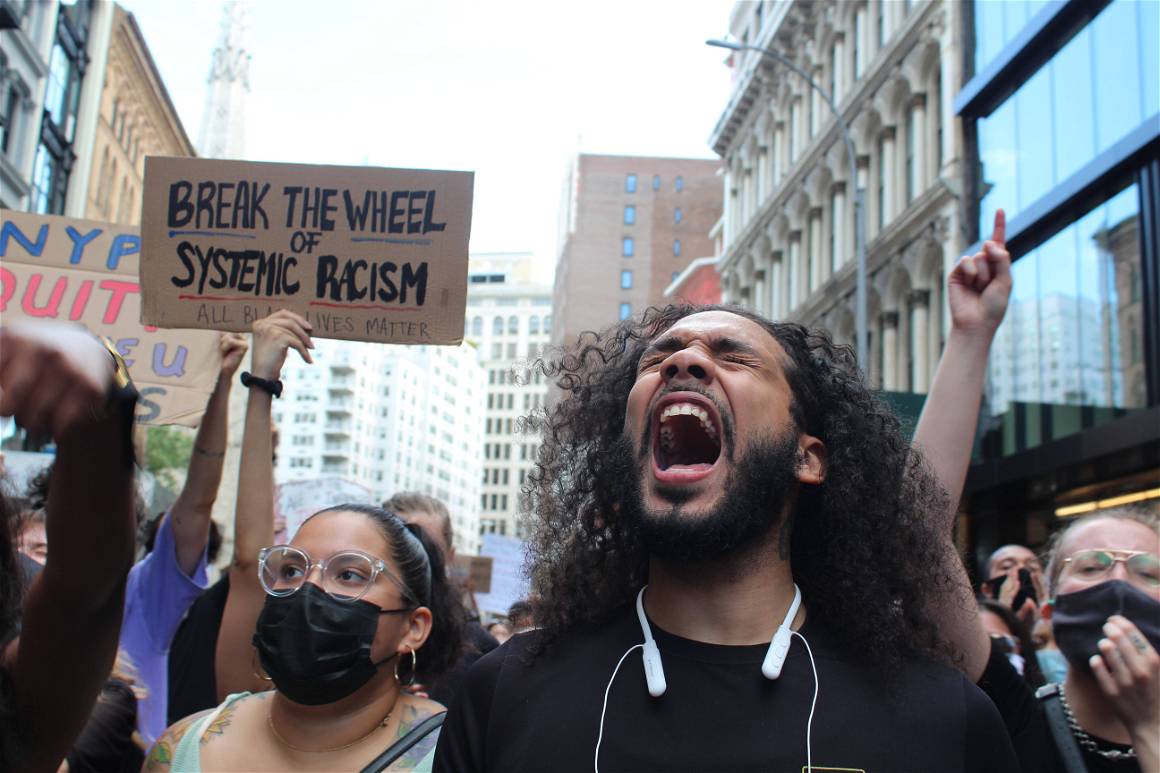
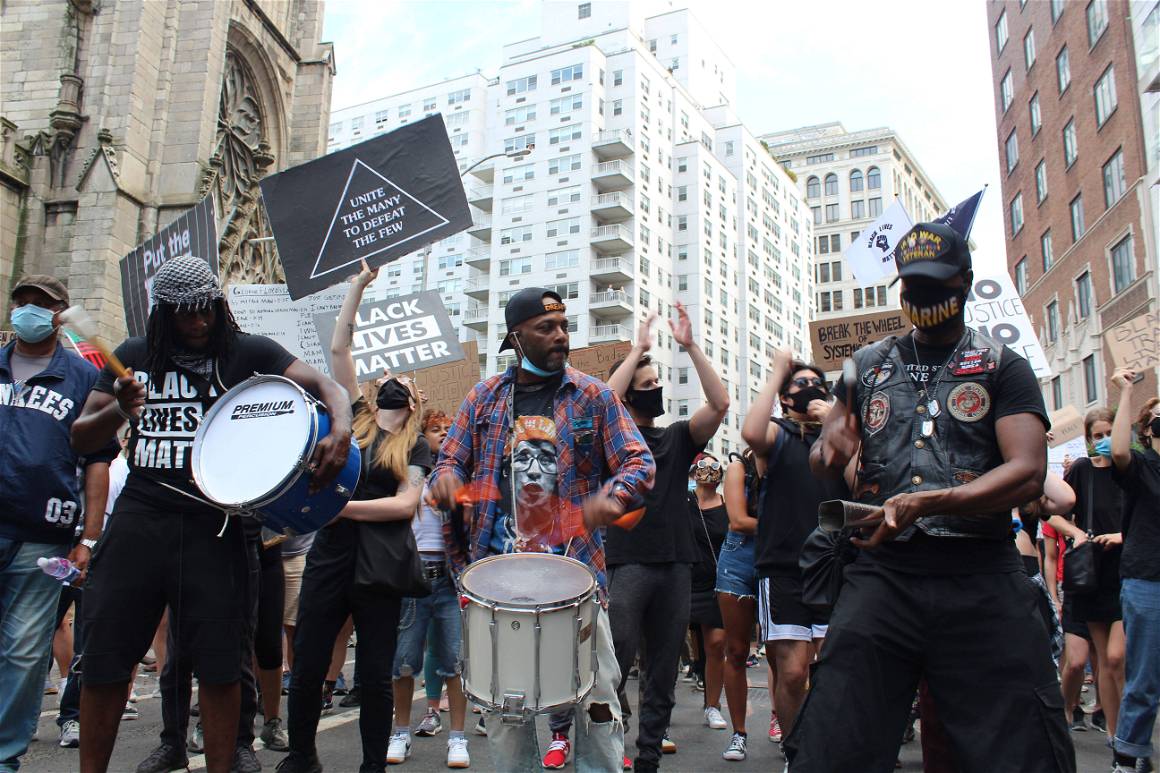
What was the atmosphere like at the demonstrations you photographed?
The atmosphere was tense from the start although the demonstrations were always well organized and supervised. I remember protesters chasing after police vans from day one to the police station after several people were arrested. These tensions increased over weeks, then months, steadily ending with clashes between police and protesters, especially by night. I also captured scenes of unheard-of violence as thugs looted New York City stores on the fringes of protests. I remember spending an entire night in the Soho neighborhood where all the stores had been ransacked after a day of protest. From the day the protesters called for the NYPD defund, the climate with the police deteriorated. Additionally was the increasing daily number of protest points, which confused the police forces and caused us to run from one place to another in the city. I used to follow the incessant and a little nerve-racking broomsticks of helicopters to find our way around.

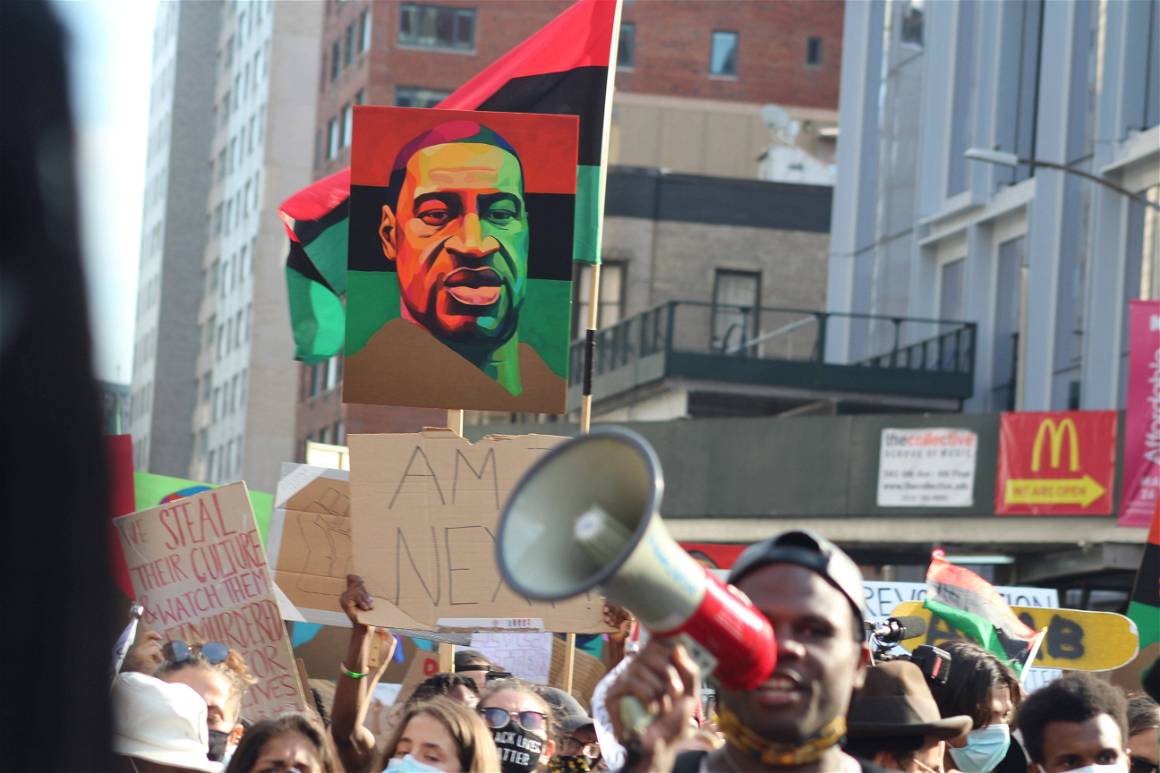
Who was the most influential person you saw or spoke to that day? Or in general whilst photographing the movement? Did you discover anything about their cause?
I particularly remember a picture I took in Manhattan on the day of the Juneteenth celebration in 2020. Thousands of people sat in the middle of the streets not far from 5th Ave. to silence for the long minutes that resulted in the death of George Floyd. Martin Luther King’s famous speech, “I have a dream” was then broadcast through a large loudspeaker. I was standing next to a black woman wearing a white headscarf. She was sitting while silently crying with her head bowed and eyes closed. I took a picture of her with tears running down her cheeks. She seemed alone in the world. More than the BLM movement, this devastated face represented all of a sudden for me the four centuries of suffering due to slavery endured by the black population in the United States.
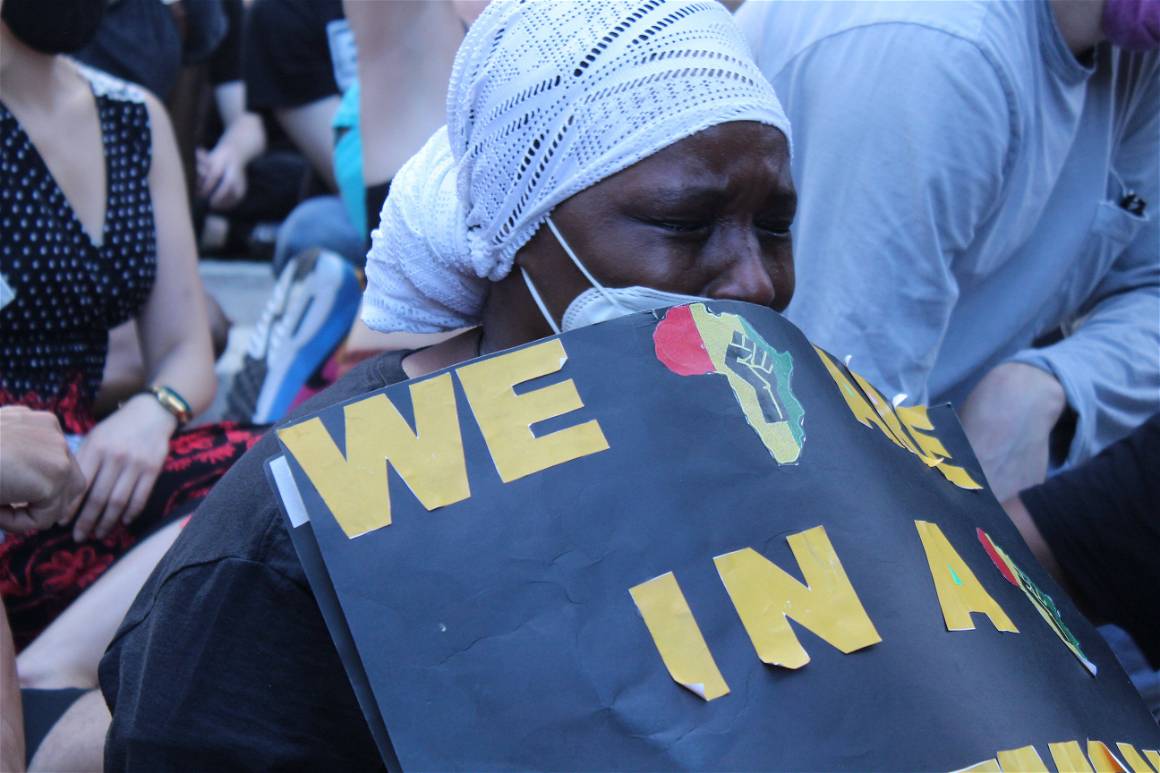
Did anything have a resounding or significant impact on you? Did you experience anything there that changed your perspective, opinion or outlook?
As a white female journalist and photographer, I have been able to observe and understand the deep suffering of the American black community during long months of protests. I haven’t covered a single mobilization without also seeing a lot of sadness, weariness, even exhaustion in the looks of having to keep hammering out the same words. So the legacy of the new generation still seems to be just as heavy to carry. But I also witnessed scenes like that one evening of a young black man arguing peacefully for long minutes with a police officer supposed to push him away. This exchange was beautiful to see and above all full of hope. When we understand that behind the anger hides intergenerational suffering with all the consequences that it implies on the human, social, cultural and economic levels, we can say that things can change and this immense mobilization has contributed to it. As a press reporter, I cannot be biased otherwise it is impossible for me to do my job, but my mission can also be to change in the right way society. A photo worth a thousand words, I hope my reporting contributed a little to it.
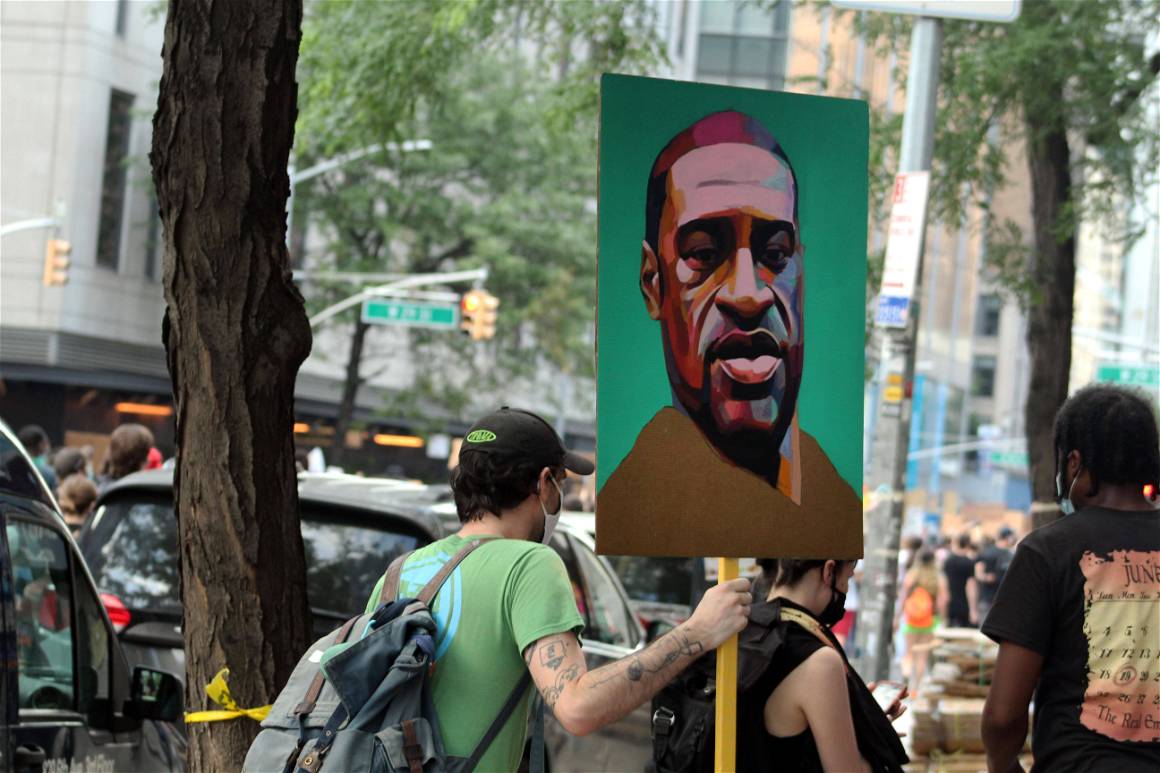
Why do you think the pairing of photography and socio-political events including protests are so poignant?
Photographers are, in my opinion, the last witnesses of this constantly changing world. A TV camera can go anywhere, but not like a photographer’s eye. And to bring back an image, we have to be on the ground, another essential principle which tends to become scarce. The coverage of social-political events also takes on a significant dimension today when we know that a mobilization can be swallowed up by social media with its good and bad intentions. Despite sometimes the dangerousness and the risks involved, the presence of the media being more and more exposed, the gaze of a professional is therefore crucial in reporting the facts and only the facts. With the pandemic, the year 2020 has been unprecedented. Additionally, were the presidential election in the United States and the death of George Floyd with the consequences that it entailed. This historic year, beyond the facts, will therefore also have been heavily charged with emotion, which photographers around the world will have tried to capture. An emotional charge that resulted in a historic verdict condemning for the first time a white police officer for the second-degree murder of a black man. A video marked the time, the images could cross it.
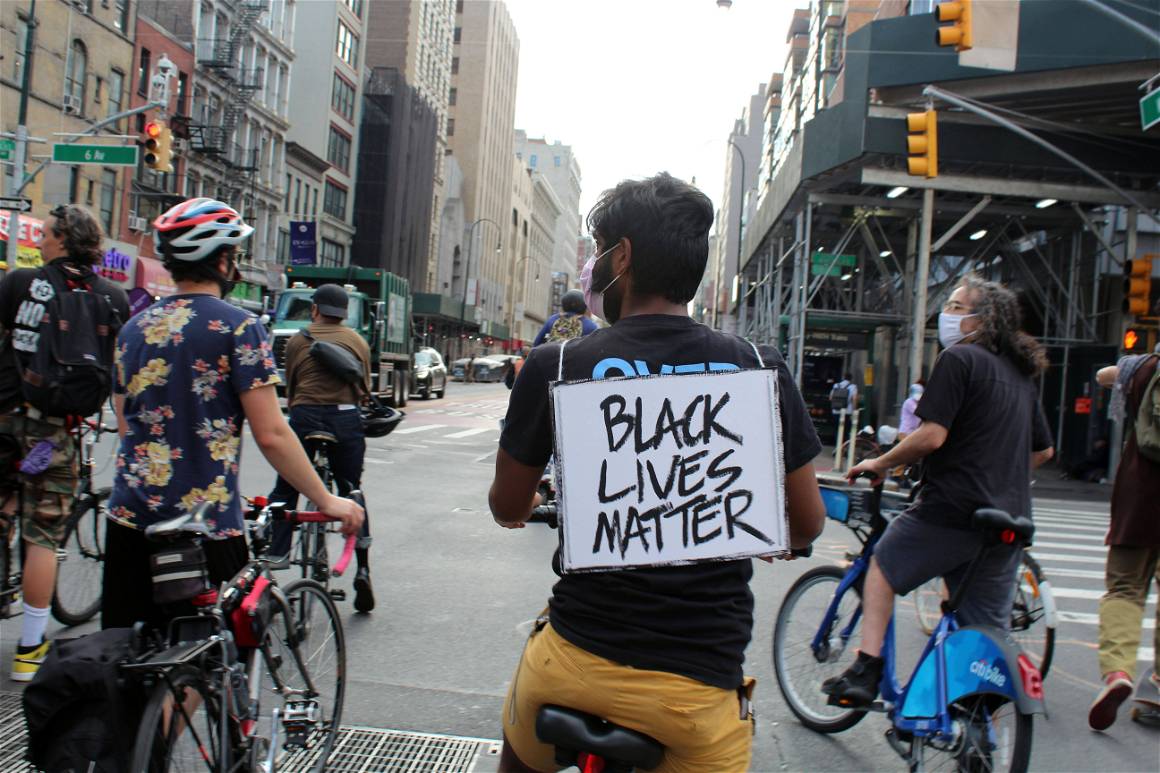

Marie Le Blé is a US-based photojournalist capturing political, social and personal stories through her photojournalism. This article is featured and written for the IMAGO Zine #2 | ICONS. Get your copy and subscribe to future issues.


